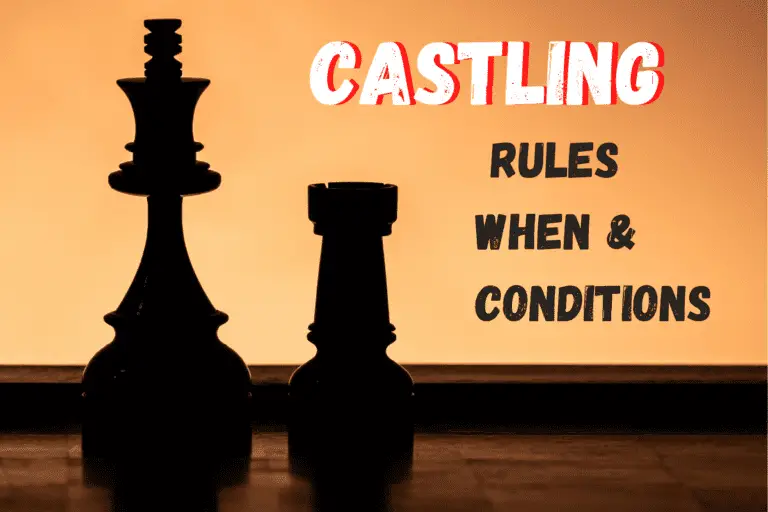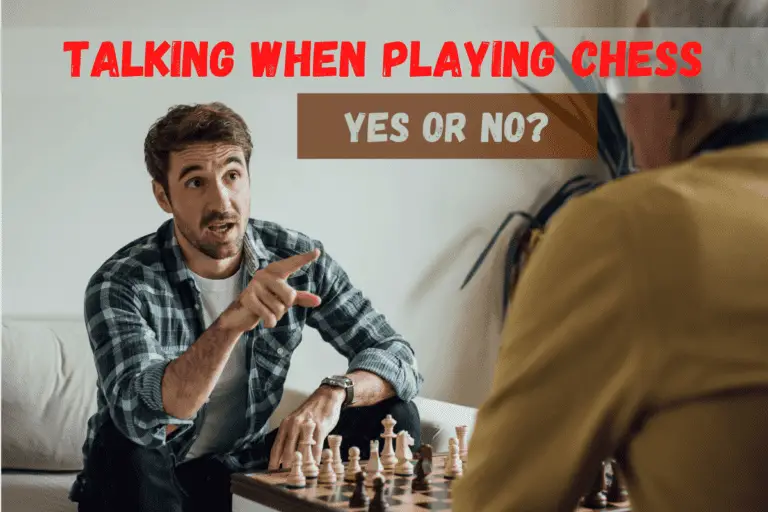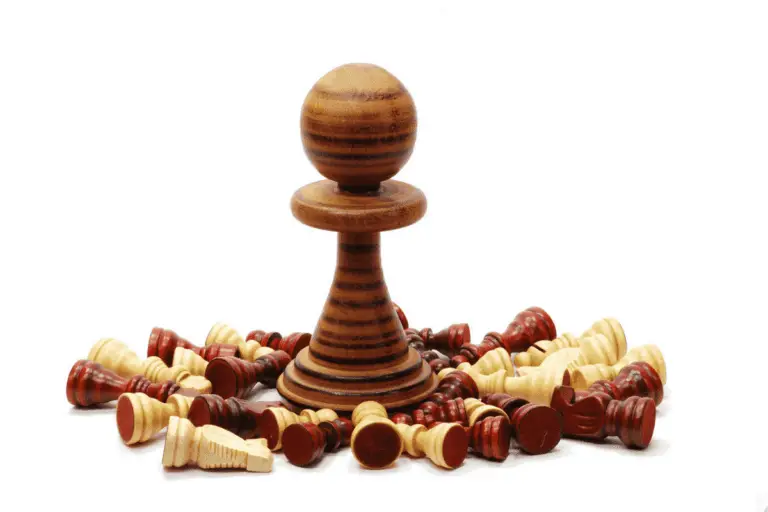Chess Time Controls – Different Types and How They Are Played
⭐⭐⭐ Take 6 minutes to read and improve your chess game ➡️ : This article was first published on, and is Copyright of Chessquestions.com
Maybe you have recently watched a film of TV Series like The Queen’s Gambit and noticed the appearance of a clock next to the board and the game of chess being timed not realizing that time controls exist in chess.
The two clocks, or single ‘Chess Clock’ as it is known is used to measure the time taken to make moves and play a game; in place to keep time and ensure a player does not exceed the allotted time frame.
In recreational chess which you may well have played in the past, it is unlikely that you have come across, or used time controls, so this article is going to address and answer the question ‘Why are chess games timed?’ and look at the different types.
Chess games are subject to timing to ensure they do not last indefinitely. Players are allotted a specific amount of time in which to move a piece, or all moves within the game, depending on the game style chosen including, short span games like, Bullet, Rapid and Blitz.
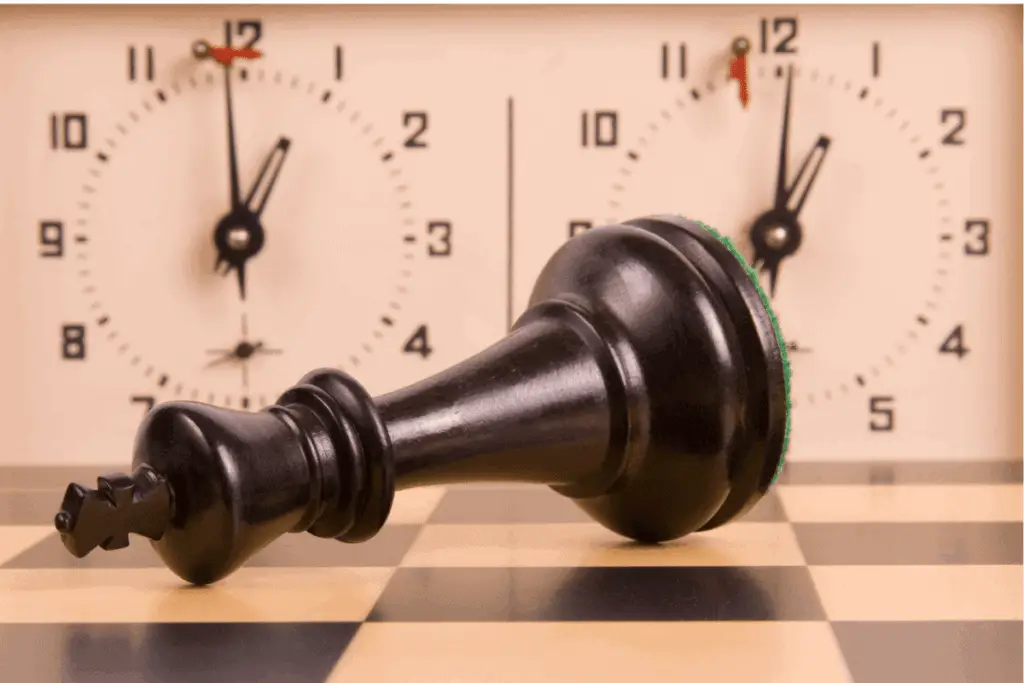
If you are looking to enter the world of competitive chess playing, it’s a good idea to know your way around every nuance of chess time control.
Chess players should be aware of how the chess clock works, why games are timed, and the various rates of play.
So let’s jump in and start with different rates of play like bullet chess and blitz chess.
Longest Timed Chess Games
Chess games are timed to prevent the possibility of dragging on for countless hours. In some cases and forms of the game like correspondence chess, it is more difficult/ to avoid
There is no limit as to how long you could spend meticulously making your moves. Indeed the longest ever game of correspondence chess was 53 years!!
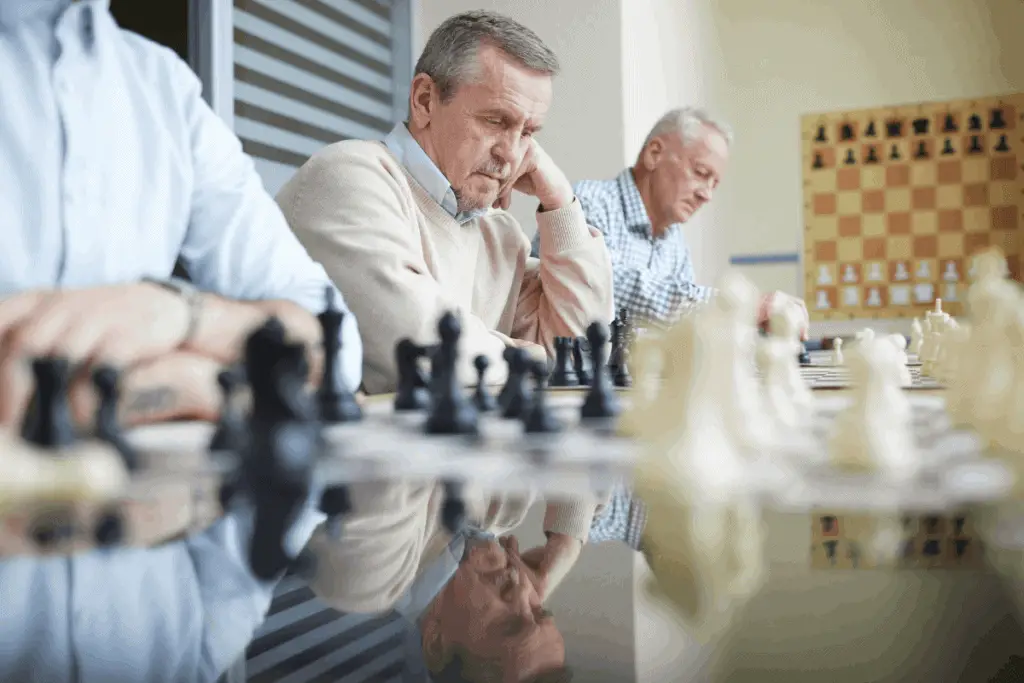
The longest rated chess game to have taken place took over 20 hours to complete and contained some 269 player moves, contested by Ivan Nikolic and Goran Arsovic in 1989. Rest assured it was not a blitz game.
When Was Timing Chess Games Introduced?
In the very early 1800s, playing chess competitively was a real commitment. The games could last between 8 and 10 hours.
Players were so desperate to win that they used exhaustion and stalling tactics to tire or distract their opponent. In fact, a match in 1843 between Pierre St. Amant and Howard Staunton lasted well over 14 hours!
The dedication was palpable. However, this type of time-consuming activity couldn’t last.
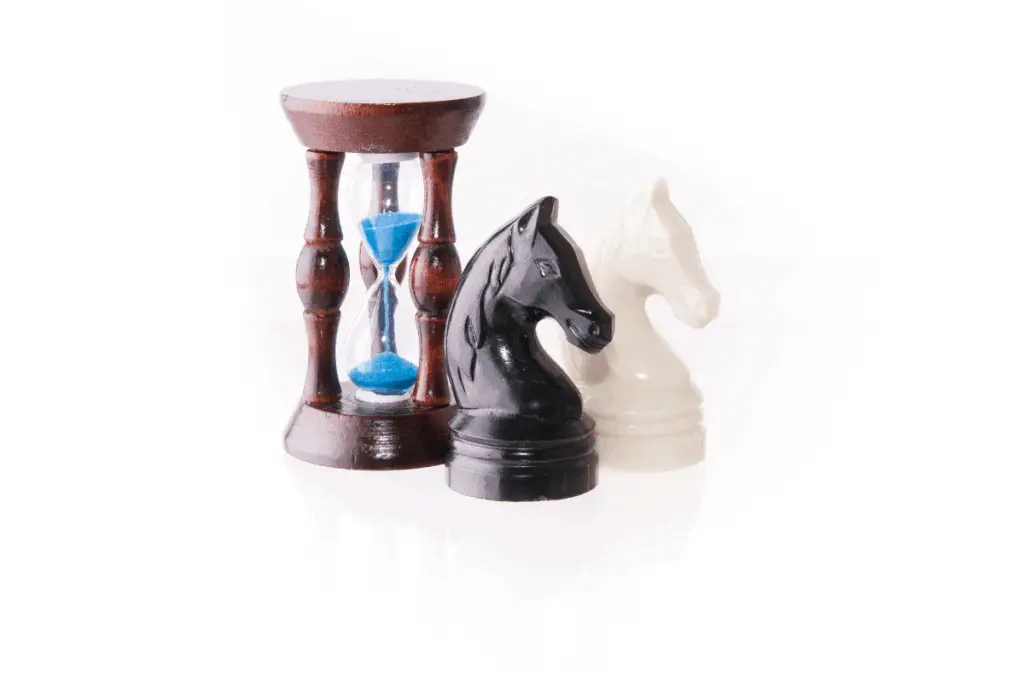
So, in the 1850s those who organized the chess competitions worked to reduce the game times. Their idea behind this was that it would make it far more “user friendly”.
The first step to reducing the gameplay time was taken by using sand timers and watches to measure each move.
At this stage, players didn’t automatically lose if they went above the limit. Instead, they had to pay a fee!
Analog Timing

When the 1880s rolled around, mechanical chess clocks were invented. These were set at the beginning of the game and counted down. Only one of the two clocks would run at a time.
A player would have to pause their analog clock and begin their opponent by pressing a button at the end of every turn.
At this stage, going above their time limit meant losing the game. The fee was abolished.
Digital Timing
It was until the 1970s that digital chess clocks came into being with the advancement of technology. These are far more accurate. .
A digital clock allows for programming. This means organizers can get creative with their chess matches and come up with weird and wonderful ways to play the game
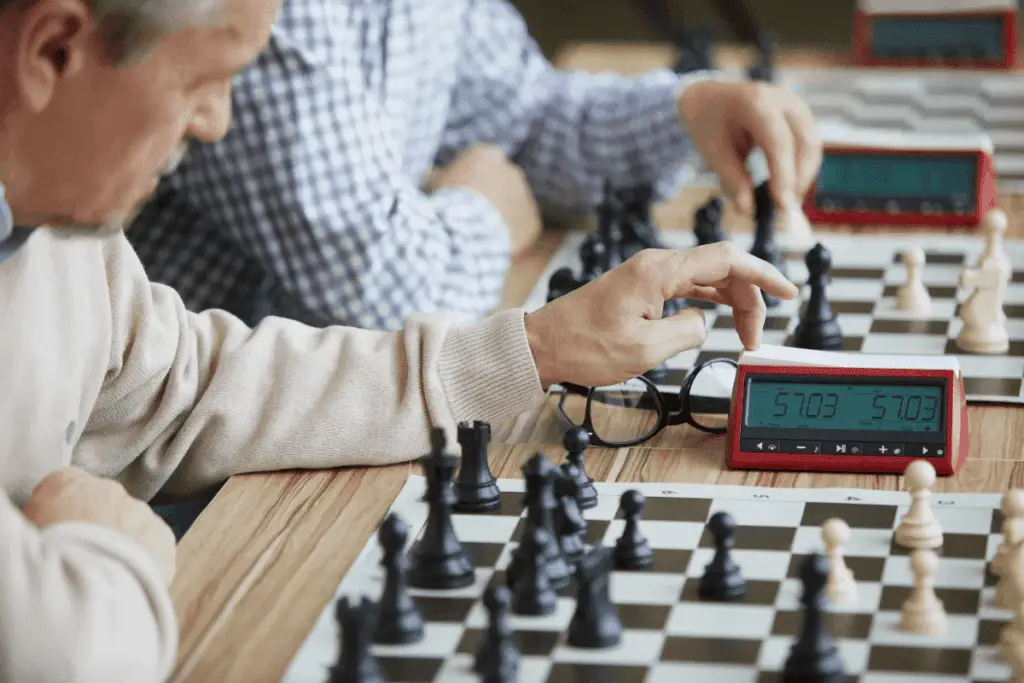
The most well-known chess clock was developed by Bobby Fischer in 1988. It allowed for a little “bonus time” at the end of every player’s move. Using this clock meant that, players weren’t penalized if they didn’t have enough time to physically perform the move.
Bobby Fischer’s bonus time is now a common theme in competitive chess. It’s generally called the “increment”.
Another useful feature found in digital clocks was the increased time reduction.
Sand timers did reduce the time from 10 hours to a few, however, digital ones allowed for variations like “speed chess” to come into fruition.
Here, entire games could be played in as little as 3 minutes. Some madmen like to try to play 1-minute bullet games too!
Chess Timer Apps
You can now even have a chess timer app on your mobile phone. There’s an app for that!! Chess.com have developed and released this little bit of kit. It is rated highly enough with an average rating of 4.7/5 from around 150 reviews, so pretty well received all in all
Chess, is no longer a strenuous time commitment thanks to the timed nature should you choose to play shorter games, but of course, if you fancy a 10 or 20 hour marathon chess match, or even a single match consisting of 112 games stretched out over 53 years, you go ahead. no one is stopping you.
Chess Game Rates of Play
Let’s take a look at the various rates of play that are available thanks to the new-and-improved chess clock.
1. Blitz Chess
The maximum amount of time allotted in a blitz game is 10 minutes or less per player.
The most popular form of Blitz you’ll come across is a three minutes per player version. you have to be pretty quick on your fingers here and be able to make quick decisions.
If playing Blitz online I would suggest starting out at the 10-minute limit first and incrementally bring the time back in if you want quicker games. Don’t go starting your blitz experience with 3 minutes, You’ll lose on time for sure.
The World Blitz Championships are played on 3 minutes though so if you want to rue the world, you’ll need to master it.
The United States Chess Federation states Blitz time controls should be between 5-10 minutes
2. Bullet Chess
This is the fastest chess game and where a game timer is absolutely essential. Players get a mere 3 minutes of total time each to make all of their moves.
If you’re feeling really fresh, you could make this even shorter!
Think it can’t be done? There are separate 1 minute per player game ratings available on some chess servers, and when you learn that there are games known as Hyper Bullet, or Lightning, you understand the terms when you learn there are games as quick as 30 seconds per player going on.
Lightning Chess is more commonly used for games where players have very limited time control for a single move, such as ten seconds.
3. Rapid Chess
My personal favorite variant of time-controlled chess is Rapid Chess which dictates between 10 minutes and a total of 60 minutes playtime maximum per player.
The more considerate players, I feel I am in this group, like to assess a position thoroughly and feel in the shorter times games.
The drawbacks of the quicker versions leave me feeling too much pressure to decide, as half of my concentration is on the clock.
With a rapid chess game of 30 minutes, it is unlikely that I will run out of time in the game, given even the most considerate moves at points in the game.
Speed Chess is not popular with all players.
Perhaps for the chess purists, these speed games are not what chess is about, we have seen spees introduced to other sports, such as cricket and snooker, met with equal disgust, and pre-eminent chess players have not held back in sharing their views.
Grandmaster Nigel Short maybe a fan, or may not be given his comment.
“I play way too much blitz chess. It rots the brain just as surely as alcohol.”
Nigel Short
Russian Grandmaster Vladimir Malakhov is not keen
“Blitz is simply a waste of time.”
Vladimir Malakhov
Whilst the youngest ever American Grandmaster, achieving the feat at just 15, Hikaru Nakamura doesn’t even class Blitz as chess.
“Blitz is just getting positions where you can move fast. I mean, It’s not chess”
Hikaru Nakamura
Tournament Chess Timings
Depending on what type of game you are playing, in organized chess, whether that be a local league or Internationally organized events, there will be a decided timing control chess rules in place
Local League Chess
Here, you will be expected to play 35 moves in 75 minutes.
Some organizers will give typical time limits of between 15 to 20 minutes of additional time to finish up.
International Chess
When you participate in an international chess tournament, you’ll be expected to play 40 moves in 2 hours. You then receive an extra hour to reach 60 moves.
If the game still hasn’t finished at this point, a quickplay end is granted to decide the winner.
While there are other kinds of hess games and times floating around, these are the ones you’re most likely to come across!



